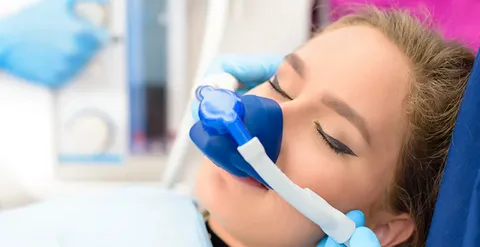For many people, visiting the dentist can be a source of anxiety, discomfort, or even fear. Whether it’s the sound of the drill, the worry about pain, or a bad past experience, dental anxiety is a real and common issue. Fortunately, sedation dentistry offers a solution that can make dental visits more comfortable, stress-free, and manageable.
What Is Sedation Dentistry?
Sedation dentistry refers to the use of medication to help patients relax during dental procedures. It’s sometimes called “sleep dentistry,” although that term is slightly misleading—most forms of sedation don’t actually put you to sleep, but rather into a deeply relaxed state.
The goal of sedation dentistry is to make dental treatments easier for patients who are anxious, have a low pain threshold, struggle to sit still, have sensitive teeth, or need a large amount of dental work done in a single session.
Types of Dental Sedation
There are several levels of sedation used in dentistry, and the method chosen depends on the patient’s needs, the procedure, and the dentist’s recommendation:
-
Nitrous Oxide (Laughing Gas)
This is the most common and mildest form of sedation. Nitrous oxide is inhaled through a mask, producing a calming effect within minutes. You remain awake and alert, and the effects wear off quickly after the mask is removed—so you can usually drive yourself home afterward.
-
Oral Sedation
Oral sedation involves taking a prescribed pill (like diazepam or triazolam) about an hour before your appointment. It induces a deeper state of relaxation compared to nitrous oxide. You’ll remain conscious but may feel drowsy or even forget parts of the procedure.
-
IV Sedation
Administered through a vein, IV sedation works quickly and allows the dentist to adjust the level of sedation throughout the procedure. You’ll still be conscious, but in a much more relaxed or semi-conscious state. A ride home will definitely be required after IV sedation.
-
General Anesthesia
This is the deepest form of sedation and is typically reserved for complex oral surgeries or patients with severe dental phobia. You will be completely unconscious, and the procedure is done in a hospital or surgical setting with an anesthesiologist present.
Who Can Benefit from Sedation Dentistry?
Sedation dentistry isn’t just for people with dental anxiety—though that’s one of its primary uses. It can also benefit:
- Patients with very sensitive teeth or gums
- Those with a strong gag reflex
- People who need multiple procedures or long appointments
- Children or adults with special needs
- Individuals who have had traumatic dental experiences in the past
If you find yourself avoiding dental care out of fear or discomfort, sedation dentistry might be the solution you’ve been looking for.
Is Sedation Dentistry Safe?
Yes—when administered by trained professionals, sedation dentistry is generally very safe. Dentists who offer sedation receive special training and follow strict guidelines to ensure patient safety. Vital signs are monitored throughout the procedure, and you’ll be carefully observed until you’re fully recovered.
However, it’s important to discuss your full medical history and any medications you’re taking with your dentist beforehand to determine the best sedation method for you.
What to Expect Before and After
Before your appointment, your dentist will walk you through the preparation steps. For oral or IV sedation, you’ll likely be instructed not to eat or drink for several hours prior and to arrange for someone to drive you home. After the procedure, you may feel groggy or sleepy, so it’s recommended to rest for the remainder of the day.
Conclusion
Dental care doesn’t have to be scary or painful. Thanks to sedation dentistry, patients can receive the care they need in a comfortable, relaxed state—free from fear or anxiety. If you’ve been putting off necessary dental work due to nerves or stress, talk to your dentist about sedation options. A healthier smile is possible, and it doesn’t have to come at the cost of your comfort.


